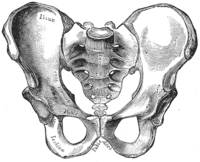
Photo from wikipedia
Strong coupling of molecules with quantized electromagnetic fields can reshape their potential energy surfaces by forming dressed states. In such a scenario, it is possible to manipulate the dynamics of… Click to show full abstract
Strong coupling of molecules with quantized electromagnetic fields can reshape their potential energy surfaces by forming dressed states. In such a scenario, it is possible to manipulate the dynamics of the molecule and open new photochemical reaction pathways. A theoretical approach to describe such coupled molecular-photon systems is the Cavity-Born-Oppenheimer (CBO) approximation. Similarly to the standard Born-Oppenheimer (BO) approximation, the system is partitioned and the electronic part of the system is treated quantum mechanically. This separation leads to CBO surfaces that depend on both nuclear and photonic coordinates. In this work, we demonstrated, for two molecular examples, how the concept of the CBO approximation can be used to perform nonadiabatic wave packet dynamics of a coupled molecular-cavity system. The light-matter interaction is incorporated in the CBO surfaces and the associated nonadiabatic coupling elements. We show that molecular and cavity contributions can be treated on the same numerical footing. This approach gives a new perspective on the description of light-matter coupling in molecular systems.
Journal Title: Journal of Chemical Theory and Computation
Year Published: 2023
Link to full text (if available)
Share on Social Media: Sign Up to like & get
recommendations!